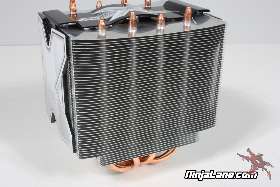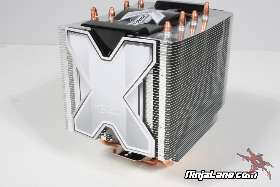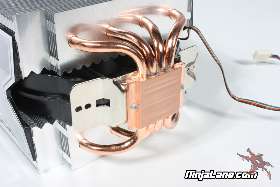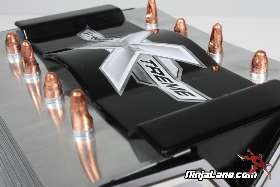Arctic Freezer Xtreme Rev 2 Heatsink Review
Author: Dennis Garcia
Published: Monday, May 28, 2012
Introduction
Minor changes to a heatsink architecture can really change how a particular design performs. For instance we have seen how twin tower coolers will often out perform a single tower designs simply by creating a thermal separation between the heatpipe ends. Of course fan choice can change the dynamics and making sure the fan is properly sized for the cooler goes a long way in cooling performance.
In this review we will be looking at the Freezer Xtreme Rev. 2 heatsink from Arctic Cooling. This is a twin tower design that features wide aluminum radiator fins and a single 120mm cooling fan in the middle. The cooler is designed for power users but yet only comes with four 6mm copper heatpipes and is rated for 160 watts of cooling capacity.
The Arctic Freezer Xtreme features a unique design and at first glance doesn't appear to have a cooling fan. It's true that most tower style coolers have the fan situated on the outside edge of the tower whereas the Freezer Xtreme changes that by placing this fan between the cooling towers. This will draw cool air over one tower and push across the other.
In this review we will be looking at the Freezer Xtreme Rev. 2 heatsink from Arctic Cooling. This is a twin tower design that features wide aluminum radiator fins and a single 120mm cooling fan in the middle. The cooler is designed for power users but yet only comes with four 6mm copper heatpipes and is rated for 160 watts of cooling capacity.
The Arctic Freezer Xtreme features a unique design and at first glance doesn't appear to have a cooling fan. It's true that most tower style coolers have the fan situated on the outside edge of the tower whereas the Freezer Xtreme changes that by placing this fan between the cooling towers. This will draw cool air over one tower and push across the other.
To help keep the air going on the right track there are some fan shrouds along both sides of the cooler that act more like decorative covers than an actual cooling apparatus.
The base of the heatsink features an extremely small contact patch that connects the large 6mm heatspipes together. Looking between the towers you may notice that the inside edges of the heatsink are angled to both increase surface area and help with heat transfer.
The base of the heatsink features an extremely small contact patch that connects the large 6mm heatspipes together. Looking between the towers you may notice that the inside edges of the heatsink are angled to both increase surface area and help with heat transfer.
Sadly the tower isn't tall enough to take full advantage of the 120mm fan with the bottom part of the fan fully exposed. The gap does solve another fundamental problem with aftermarket coolers which is how do you cool the motherboard PWM heatsinks?. With this design you at least get some high speed air moving across the bottom of the heatsink.





